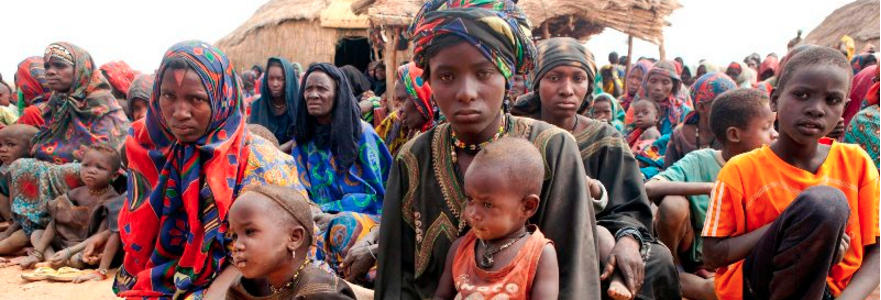3.4 million people are in need of nutrition assistance as of July 2017, including 1.2 million malnourished children under 5 (SAM and MAM) and pregnant and lactating women needing nutrition assistance in Adamawa, Borno and Yobe. There were 371,792 reported SAM cases across northeast Nigeria between January and August this year.
The number of cases each month has been relatively stable thoughout the year, roughly increasing by 35,000 cases a month, but in July and August there were significant spikes of over 64,000 and 77,000 cases respectively. These numbers clearly outline the nutrition emergency in northeast Nigeria, which has exceeded the predicted levels for 2017.
A nutrition emergency was declared in northeast Nigeria in July 2016. The number of children with SAM could rise to 400,000 over 2017. It is likely that malnutrition figures are vastly underreported, as the worst affected areas remain inaccessible. It is estimated that for each malnutrition death, a further five children will be stunted.
A UNICEF assessment in February 2017 of five LGAs in central Yobe state recorded emergency SAM levels (above 2%), while the remainder of the state and southern Borno state had between 1-2%. No data was available in northern and eastern Borno state, the most conflict affected areas. GAM prevalence was high in all of Yobe and Borno states (between 10 and 14%).
Malnutrition screening was reported in 28% of assessed sites in host communities and in 64% of camp/camp-like settings in a June DTM. Assessment found no supplementary feeding for children reported in 83% of host community sites and in 56% of camp/camp-like sites. Supplementary feeding for pregnant and lacating women was not seen in 70% of camp/camp-like settings assessed or in 88% of host communities. Over 90% of sites assessed in host communities and camp/camp-like sites reported no supplementary feeding for the elderly.
Read full report here.
Original source: Assessment Capacities Project.
Posted on 5 October 2017

